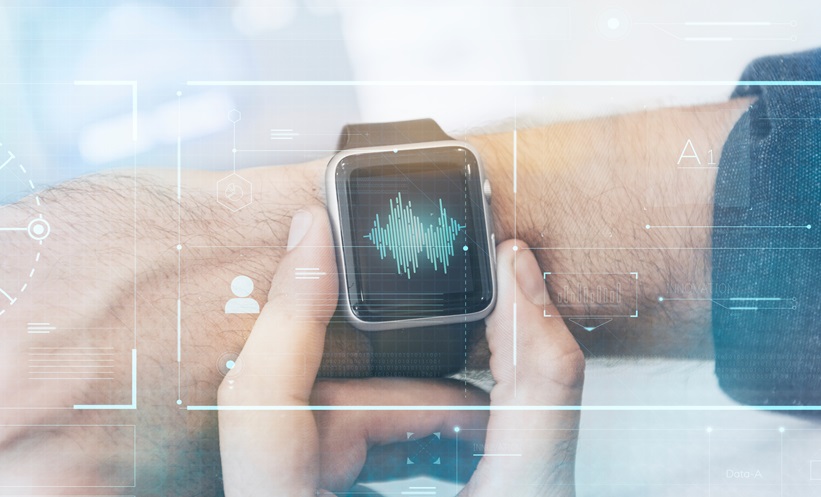INTRODUCING A NEW PARADIGM OF HEALTHCARE INNOVATION
A growing stream of literature argues for a more active role for patients and caregivers in healthcare delivery, namely in:
- managing their disease, and becoming more active and empowered patients1-3
- participating in the decision-making process of their treatments4,5
- demanding free access to medical research papers, and organising research6
- demanding their illness data, and exchanging it with other patients7
However, this literature does not consider the innovation capacity of patients and caregivers, and their ability to develop new products and services. To attain the goal of truly patient-centric healthcare, it is necessary to also support and integrate the innovation-related activities of patients and caregivers into the current system.
In this article, we share a view of the paradigm shift in healthcare that is inspired by the work in the social sciences on users and user communities, and by the growing number of new initiatives that are propelling this shift in healthcare.
THE PATIENT INNOVATION RESEARCH STREAM
Many patients with chronic diseases and non-professional caregivers develop useful and innovative solutions to help them cope with their health disorders.8-11 When we began studying this phenomenon, we first focussed on a set of rare and chronic diseases and looked at the solutions patients use to help them cope with their disease or health condition. We found that patients and caregivers have significant innovative capabilities and have developed various solutions, treatments, and medical aid devices for themselves (e.g. about 50% of the solutions for cystic fibrosis were developed by the patients). These solutions span from simple tools for everyday use, through to the discovery of previously unknown therapies and highly sophisticated solutions.11
Encouraged by these results, we decided to explore the phenomenon further, focussing on individuals, rather than the solutions. We administered a survey to a sample of 500 rare disease patients and caregivers and found that 40 respondents, i.e. 8% of our sample of patients and caregivers, had developed innovative solutions for themselves that were evaluated as novel by medical experts. If this fraction of innovators holds for the overall population, patient and/or non-professional caregivers represent a tremendous source of healthcare innovations.9 Several other studies reported estimates of health-related innovation by ordinary citizens to be from 0.2–0.5% of a population.12,13 If one considers the estimated fraction of the world’s population afflicted by rare diseases to be around 6–8%, it is easy to conclude that the pattern is being repeatedly confirmed. The findings suggest that patients and caregivers around the globe may collectively offer a huge amount of information and knowledge on how to improve patient care in the medical setting.
INNOVATIVE SOLUTIONS DEVELOPED BY PATIENTS OR CAREGIVERS
There are many examples of innovations developed by patients and caregivers. The website www.patient-innovation.com has >500 solutions, which have been collected, screened, and shared. Here, we will briefly mention solutions of varying complexity that we encountered during our research. Some of them are technically very simple, but nonetheless offer great value to patients and their families. The first of this group is the case of a daughter whose father had dementia and would take a long time to eat meals which proved a difficult time for all the family. He stared at the plate, hesitantly trying to pick up the food. One day, she realised that the colourful and illustrated dishes they used at home disturbed and distracted her father; he had trouble trying to find the food amongst the colourful illustrations. Once the daughter started using white plates, everything changed; the meals suddenly became much faster as the father could easily find the food on the plate.
Another case we identified in our research, is that of Michael Seres, who was diagnosed with Crohn’s disease when he was 12 years old. After >20 surgeries, Michael underwent a transplant of the small bowel and started to use an intestinal bag. His own experience as an ostomy patient led Michael to design the Ostom-i Alert™ prototype, while recovering from the transplant. Ostom-i Alert helps warn patients when their ostomy bags are full so they can empty them without risking an overflow. Ostom-i Alert addresses a very relevant need for patients undergoing intestinal procedures that require them to wear colostomy bags, often for the rest of their lives.
The vast majority of the innovations in our sample were developed to increase patients’ autonomy. For example, a patient with myasthenia gravis, an autoimmune neuromuscular junction disorder, reported designing several products, which were custom-built according to her specifications. She described the design of one of the tools, a metal two-hook aid that helps her button trousers without the assistance of others. Other reported solutions involved repeated experimentation with the design of elements commonly found in any household. This includes optimisation of the height and width of stairs to improve mobility, or design of tables and chairs with added features to produce safer solutions for hyperactive children with cognitive limitations.
Patients also develop very sophisticated solutions. For example, consider a footstep monitoring device named Sensastep® developed by Jon Christiansen, a sea captain with an amputated leg. When using an artificial leg, Jon experienced discomfort due to the absence of feedback from the ground, which led to the loss of balance, falls, and an increased cognitive effort spent on balancing. The device is small and relatively unnoticeable. The patient wears a conductive foam insole containing 13 embedded pressure sensors. As the heel or toe strikes the ground, a transmitter strapped to the ankle sends signals to a receiver that slips over the ear. The earpiece vibrates against the bone behind the ear, stimulating the cochlear nerve. Variations in the vibrations, which the patient perceives as audible tones, alert the brain as to what part of the foot has contacted the ground ensuring that Christiansen and other patients do not need to look down and watch every step they take to avoid falls.
Another example is Avi Yaron from Israel. After being diagnosed with a brain tumour, he realised that there were no three-dimensional cameras small enough to collect images in deep regions of the brain. He created a three-dimensional camera known as ‘Insect Eye’; a scope that mimics the compound eye of a bee and is small enough to operate in the brain. The scope contains a miniature sensor with hundreds of thousands of micron-sized elements, each looking in slightly different directions and mapping the surgical field from many different points.
Although very sophisticated and complex solutions developed by patients do exist, the fact that the majority of these solutions are simple and easy to acquire may be their ‘actual’ advantage. Not only that, the externalised experience and knowledge in the form of solutions contributes to the stock of knowledge about the diseases and various ways to cope with them, it also adds to the variety of choices to address specific needs. An issue is that the general value of these solutions increases if the solutions diffuse, and several studies show that people who develop solutions to solve their needs rarely share them.9,13
THE LOW-DIFFUSION OF SOLUTIONS DEVELOPED BY PATIENTS AND CAREGIVERS
Innovation scholars suggest that, although millions of users develop or modify solutions (including solutions to medical care problems) to better fit their needs, very few of these solutions are shared. In a study of user innovation in Finland, only 19% of the reported user innovations spread.14 Among rare disease patients, 32% of those who self-developed a solution to cope with their disease shared information about it with others.9 In both studies, for the majority of the solutions that were not shared, the developers believed that they could be valuable to the others;14 the authors of the studies argued that the lack of sharing of valuable solutions is a type of market failure. Patients do not share the innovations due to several reasons: unlike businesses, they do not have the financial incentives, skills, or opportunities to enter the long process of approval and commercialisation; they solve their problem and keep the solution to themselves as they do not know about, or have access to, methods of sharing. An important question is: how do we help more people bring their solutions to a wider audience? One answer is to lower the cost of sharing. Technology and online platforms are one means of doing this. Primary care physicians, hospital specialists, and other health professionals may also serve in discovering and helping to spread new solutions by active solicitation of solutions in face-to-face and online meetings with their patients. Other crucial issues in the relationship between patients and doctors are the ethical aspects around the introduction of innovative therapies, the importance of informed consent, and open and transparent discussion with the patient, all of which are becoming increasingly necessary.15
MAIN IMPLICATIONS AND INTERVENTION (THE PATIENT INNOVATION PLATFORM)
Many patients and caregivers are not satisfied with the solutions currently available to help them cope with their needs. Technology improves an individual’s ability to experiment with their ideas,16 and it is likely that the innovative activity of patients and caregivers will increase because of technological advances. This activity may have important implications, in terms of improving both quality of life and health outcomes for many people, if we find a way to easily collect and compare these solutions. One way to intervene and reduce the cost of sharing and searching for existing solutions is to develop a centralised online inventory of patient or caregiver-developed solutions. With this in mind, we developed Patient Innovation, www.patient-innovation.com, a non-profit, international, and open platform designed to allow patients and caregivers to show and share the innovative solutions they have developed to cope with their diseases, as well as to foster collaboration among patients, caregivers, and others. This platform was launched in February 2014, and has a community of >36,000 users with >500 solutions curated and shared by the medical team, as of August 2016.
Platforms and other information and communication technologies facilitate participation and easy interaction amongst patients, caregivers, and health professionals. Health professionals may also learn more about patients’ needs and the solutions they have developed to cope with problems in their daily lives, as well as having more options to offer patients in their jobs.
We are just at the beginning of understanding innovation by patients and caregivers, and learning to innovate with them. It is therefore important that all the stakeholders in the healthcare value chain increase their awareness of the phenomenon, and support the process of innovation by patients, caregivers, and other collaborators. Numerous challenges are associated with patients developing and sharing their health-related solutions. For example, how can we professionally assess them, determine their general value, and stimulate diffusion for broader long-term public health benefits. It is time to open our healthcare system to help patients help themselves and, in turn, many others.








